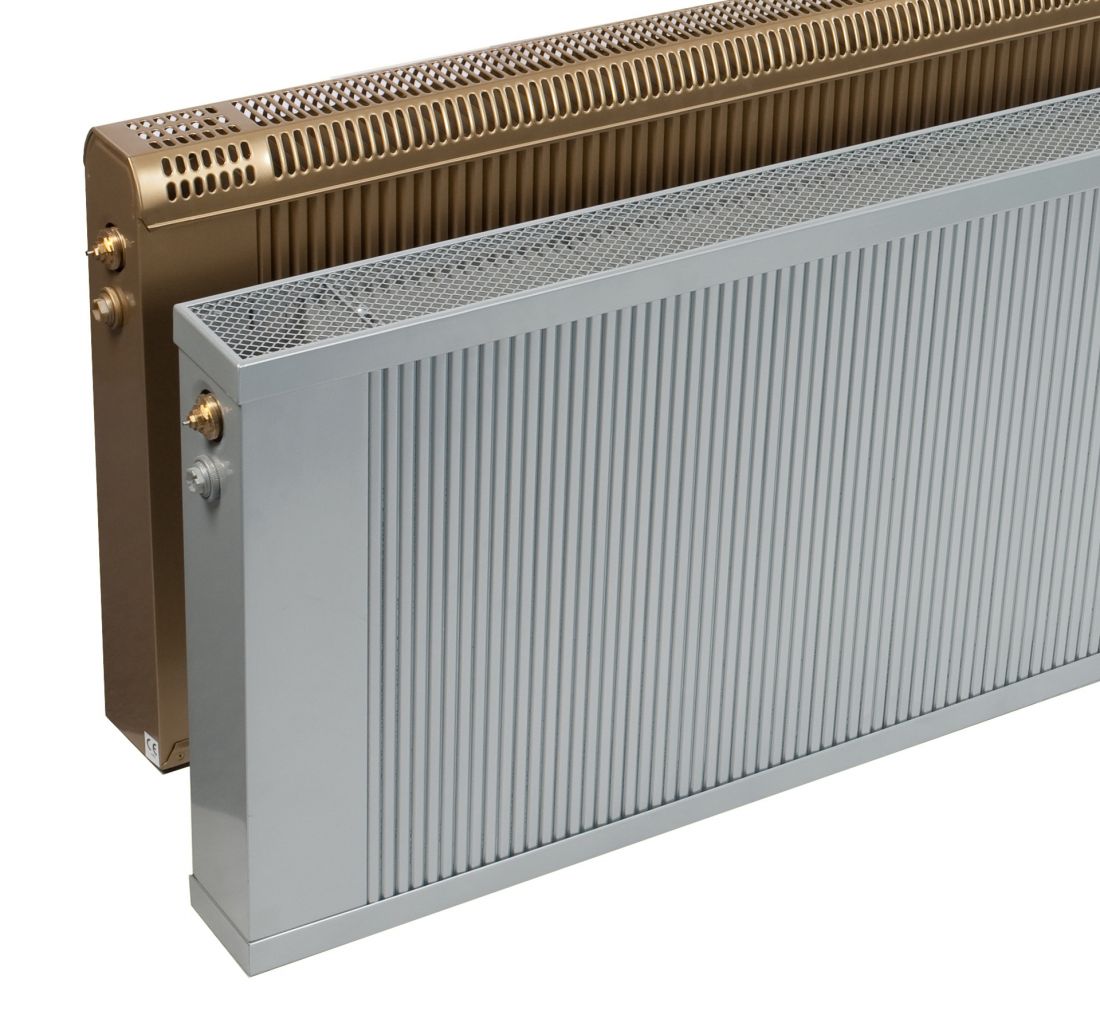Low-temperature, low-inertia heaters.
From the series "Air conditioning, ventilation, heating - technologies 2022".
Radiators for a heat pump? The best ones are low-temperature REGULUS®-system radiators.
Why?
A 1°C increase in the temperature of 1 m² of each! radiator, including floor radiators, gives an increase in its heating power of about 10 watts. Of all types of wall radiators on the market, regulus have the largest exchange area.
The construction of regulus resembles a radiator - the copper water system provides the greatest efficiency in receiving heat from the heating medium, the aluminum fins transfer heat to the air by radiation from the surface and convection.
If your client is changing his heating to a heat pump, don't forget to offer to replace his radiators with modern, controllable, low-temperature radiators. If the investor has not carried out a thorough thermal modernization of his house, leaving the existing radiators is a "mistake in the art". Investors later regret that no one informed them of this necessity.
REGULUS®-system low-temperature radiators - Regulus (gold) and Sollarius (silver) models.
© Regulus
What the INVESTOR should do, with YOUR advice, by the hands of his INSTALLER
- Renovated facilities - option one. Replacement of radiators with radiators of the same size but equipped with in-wall, quiet-running, cross-tube turbines (currently exclusively offered by REGULUS®-system - wall radiators: E-VENT 230 V, heating or REVERS 24 V, heating and cooling by reversing on the heat pump).
- Renovated facilities - option two. Installation under the existing radiators of universal transverse radiator turbines of the ZEPHYR type (currently exclusively offered by REGULUS®-system).
- Renovated facilities - option three. It is necessary to oversize the radiators, i.e. to change the existing type of radiators to larger ones by about 50% (note - there is not always room for this).
- New buildings. Hybrid heat distribution (HDC) implementations. Good central heating/cooling system configuration: heat pump + small heat buffer (about 200 liters) + underfloor heating in communication areas + low-temperature radiators. The heating process is dominated by low-inertia radiators, which are easy to start and easy to stop. 70% of the heating needs will be met by radiators, the floor will give a "summer floor effect" and support the radiators in heavy frost.
REGULUS®-system low-temperature radiators - Regullus Plan - model with 24 V fan
© Regulus
Regulus low-temperature, low-inertia heaters are used in three options
- Standard heating - radiation + convection, any installation, all heat sources - all types of REGULUS®-system production.
- Standard heating or with assisted air circulation - E-VENT series.
- Standard heating, heating with assisted air circulation, cooling - REVERS series.
REGULUS®-system low-temperature radiators - Revers
© Regulus
Optimal heat production should be accompanied by optimal heat distribution. Our House should provide thermal comfort and thermal safety for the whole family.
- As much HEAT AS YOU NEED AND exactly when you NEED it. It is not comfortable if there is too little or too much heat, or if it is given at the wrong time.
- Heat should be produced in such a way as to maximize the calorific value of the energy carrier used. If the heat is not in full demand, the excess should not be stored in the floor but in a buffer tank. It should be "heat for later". Charging energy into a concrete floor, whether there is a demand for heat or not, is wasteful and a concrete financial loss!
- It is a serious mistake to install a heat source with excess power! Radiators are not there to buffer the excess power of the heat source and protect it from clocking in. Radiators are supposed to heat - when you want, for how long you want and where you want.
- The central heatingsystem should be controllable so that, as soon as the desired temperature is reached or large heat yields appear, also when there is no need to continue heating (e.g., going to work, leaving), heating can be stopped as soon as possible.
Cheap and comfortable, year-round, flexibly responding to any changes and weather anomalies, heating of the house is not possible without having easily controllable radiators with minimal thermal inertia.
For more information, visit the company's REGULUS-system Wójcik sp. j. page on the PdA portal.































